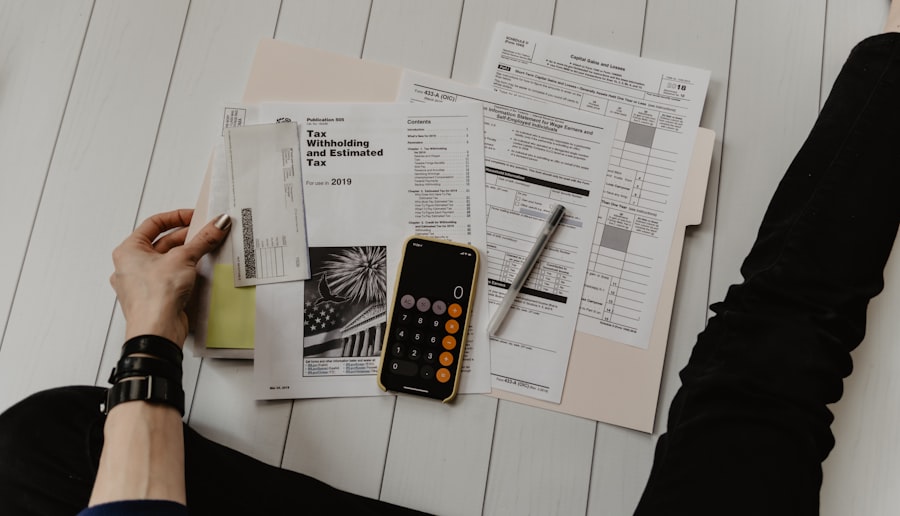Budgeting is a crucial aspect of financial success. It involves creating a plan for how you will spend and save your money, allowing you to have control over your finances and make informed decisions about your spending habits. By budgeting effectively, you can reduce debt, increase savings, and achieve your financial goals. In this article, we will explore the importance of budgeting and provide practical tips for creating and sticking to a budget plan.
Understanding the Importance of Budgeting
Budgeting is the process of creating a plan for how you will allocate your income to cover your expenses and save for the future. It is important because it helps you gain control over your finances and make intentional decisions about your money. Without a budget, it is easy to overspend, accumulate debt, and struggle to achieve your financial goals.
One of the key benefits of budgeting is that it helps reduce debt. By tracking your expenses and income, you can identify areas where you are overspending and make adjustments to reduce unnecessary expenses. This extra money can then be used to pay off debt more quickly, saving you money on interest payments in the long run.
Budgeting also allows you to increase savings. By setting aside a portion of your income each month for savings, you can build an emergency fund, save for retirement, or work towards other financial goals. Having savings provides a safety net in case of unexpected expenses or emergencies and gives you peace of mind knowing that you are prepared for the future.
Furthermore, budgeting helps you achieve your financial goals. Whether it’s saving for a down payment on a house, paying off student loans, or taking a dream vacation, having a budget allows you to allocate funds towards these goals and track your progress over time. By setting realistic financial goals and creating a plan to achieve them, you are more likely to succeed in reaching them.
Assessing Your Current Financial Situation
Before creating a budget, it is important to assess your current financial situation. This involves calculating your net worth, analyzing your income and expenses, and understanding your financial obligations.
To calculate your net worth, add up all your assets (such as cash, investments, and property) and subtract your liabilities (such as debt and loans). This will give you a snapshot of your overall financial health and help you understand where you stand financially.
Next, analyze your income and expenses. Make a list of all your sources of income, including salary, bonuses, and any other sources of revenue. Then, track your expenses for a month or two to get an accurate picture of where your money is going. Categorize your expenses into fixed expenses (such as rent or mortgage payments) and variable expenses (such as groceries or entertainment). This will help you identify areas where you may be overspending and areas where you can potentially cut back.
Finally, understand your financial obligations. This includes any debts you have, such as student loans or credit card debt, as well as any recurring expenses like insurance premiums or subscription services. Knowing your financial obligations will help you prioritize them when creating your budget plan.
Setting Realistic Financial Goals
| Financial Goals | Description | Timeframe | Progress |
|---|---|---|---|
| Emergency Fund | Saving 3-6 months of living expenses | 1 year | 50% |
| Debt Repayment | Paying off credit card debt | 2 years | 75% |
| Retirement Savings | Contributing to a 401(k) or IRA | 30 years | 25% |
| Investment Portfolio | Diversifying investments | 5 years | 10% |
Setting realistic financial goals is an important part of the budgeting process. It gives you something to work towards and helps you stay motivated to stick to your budget plan.
When setting financial goals, it is important to be specific and measurable. For example, instead of saying “I want to save more money,” set a specific goal like “I want to save $5,000 for a down payment on a house in the next year.” This allows you to track your progress and adjust your budget accordingly.
It is also important to set realistic goals that are achievable within your current financial situation. If you have a lot of debt or limited income, it may not be realistic to save a large amount of money in a short period of time. Start with smaller, achievable goals and gradually increase them as you make progress.
Examples of financial goals include paying off debt, saving for a down payment on a house, building an emergency fund, or saving for retirement. Choose goals that are meaningful to you and align with your long-term financial aspirations.
Creating a Comprehensive Budget Plan
Once you have assessed your current financial situation and set realistic financial goals, it’s time to create a comprehensive budget plan. This involves identifying all sources of income and expenses and allocating funds accordingly.
Start by listing all your sources of income, including your salary, bonuses, and any other sources of revenue. Be sure to include any irregular income, such as freelance work or side hustles. This will give you an accurate picture of how much money you have coming in each month.
Next, list all your expenses. Start with fixed expenses, such as rent or mortgage payments, utilities, and insurance premiums. Then, list variable expenses like groceries, transportation costs, and entertainment. Be sure to account for any irregular expenses that may occur throughout the year, such as annual subscriptions or holiday gifts.
When creating your budget plan, it is important to be realistic and flexible. Account for unexpected costs by setting aside a portion of your income for emergencies or unexpected expenses. It is also helpful to automate savings by setting up automatic transfers from your checking account to a savings account each month.
Tracking Your Income and Expenses

Tracking your income and expenses is a crucial part of budgeting. It allows you to see where your money is going and make adjustments as needed.
There are several tools and apps available that can help with tracking expenses. These tools allow you to link your bank accounts and credit cards to automatically track your transactions. They categorize your expenses and provide visual representations of your spending habits.
If you prefer a more hands-on approach, you can track your income and expenses manually using a spreadsheet or a budgeting journal. This involves recording each transaction and categorizing it accordingly. While this method requires more effort, it can provide a more detailed understanding of your spending habits.
Regardless of the method you choose, the key is to track your income and expenses consistently. Set aside time each week or month to review your transactions and make adjustments to your budget as needed.
Identifying Areas for Savings and Cutbacks
Once you have a clear understanding of your income and expenses, it’s time to identify areas for savings and cutbacks in your budget. This involves analyzing your spending habits and finding areas where you can potentially reduce expenses.
Start by reviewing your variable expenses, such as dining out, entertainment, or shopping. These are often areas where people overspend without realizing it. Look for opportunities to cut back, such as cooking at home more often, finding free or low-cost entertainment options, or reducing unnecessary purchases.
You can also look for ways to save on fixed expenses. For example, shop around for better insurance rates or negotiate lower interest rates on credit cards or loans. Consider downsizing your living arrangements or finding ways to reduce utility costs.
It is important to be realistic when identifying areas for savings and cutbacks. While it’s great to find ways to save money, it’s also important to maintain a balanced lifestyle and not deprive yourself of things that bring you joy. Find a balance between saving money and enjoying life.
Developing a Debt Repayment Strategy
If you have debt, it is important to develop a debt repayment strategy as part of your budget plan. This involves prioritizing your debts and creating a plan to pay them off systematically.
Start by making a list of all your debts, including the amount owed, interest rates, and minimum monthly payments. Then, prioritize your debts based on the interest rates. Focus on paying off high-interest debt first, as this will save you the most money in the long run.
There are several strategies you can use to pay off debt. One common approach is the debt snowball method, where you start by paying off the smallest debt first and then move on to the next smallest debt. This method provides a sense of accomplishment and motivation as you see your debts being paid off one by one.
Another strategy is the debt avalanche method, where you focus on paying off the debt with the highest interest rate first. This method saves you more money on interest payments but may take longer to see progress.
Consider consolidating your debts if it makes sense for your situation. Debt consolidation involves combining multiple debts into one loan with a lower interest rate. This can make it easier to manage your debts and potentially save you money on interest payments.
Building an Emergency Fund
Building an emergency fund is an essential part of financial planning. An emergency fund provides a safety net in case of unexpected expenses or emergencies and helps prevent you from going into debt.
To build an emergency fund, start by setting a savings goal. Aim to save three to six months’ worth of living expenses, or more if you have a higher risk of job loss or other financial uncertainties.
Set aside a portion of each paycheck for your emergency fund. Treat it as a non-negotiable expense, just like paying your rent or mortgage. Consider automating your savings by setting up automatic transfers from your checking account to your emergency fund.
It is important to keep your emergency fund separate from your regular checking account to avoid temptation. Consider opening a separate savings account specifically for your emergency fund and avoid using it for non-emergency expenses.
Sticking to Your Budget: Tips and Tricks
Sticking to your budget can be challenging, but there are several tips and tricks that can help you stay on track.
One tip is to avoid impulse purchases. Before making a purchase, ask yourself if it aligns with your financial goals and if it is something you truly need. Consider implementing a waiting period for non-essential purchases, such as waiting 24 hours before making a decision. This can help prevent impulse buys and give you time to evaluate whether the purchase is necessary.
Find ways to make budgeting fun. Set small rewards for yourself when you reach certain milestones or achieve your financial goals. This can help motivate you to stick to your budget and make the process more enjoyable.
Consider finding an accountability partner or joining a support group. Having someone to share your progress with and hold you accountable can make a big difference in sticking to your budget. Look for online communities or local groups that focus on personal finance and budgeting.
Reviewing and Adjusting Your Budget Over Time
It is important to review and adjust your budget over time to ensure it remains effective and aligned with your financial goals.
Review your budget on a regular basis, such as monthly or quarterly, to track your progress and make adjustments as needed. Look for areas where you may be overspending or areas where you can potentially save more money. Consider reallocating funds towards your financial goals or adjusting your savings rate based on changes in income or expenses.
Life circumstances can change, so it’s important to be flexible with your budget. If you experience a significant increase or decrease in income, adjust your budget accordingly. If you have a major life event, such as getting married or having a baby, reassess your financial goals and make adjustments as needed.
Remember that budgeting is not a one-time task but an ongoing process. It requires discipline and commitment, but the rewards are worth it. By regularly reviewing and adjusting your budget, you can stay on track towards achieving your financial goals.
Budgeting is an essential tool for achieving financial success. It allows you to have control over your finances, reduce debt, increase savings, and achieve your financial goals. By assessing your current financial situation, setting realistic goals, creating a comprehensive budget plan, tracking your income and expenses, identifying areas for savings and cutbacks, developing a debt repayment strategy, building an emergency fund, and sticking to your budget, you can take control of your finances and work towards a secure financial future. Remember to regularly review and adjust your budget to ensure it remains effective and aligned with your goals.









Add Comment